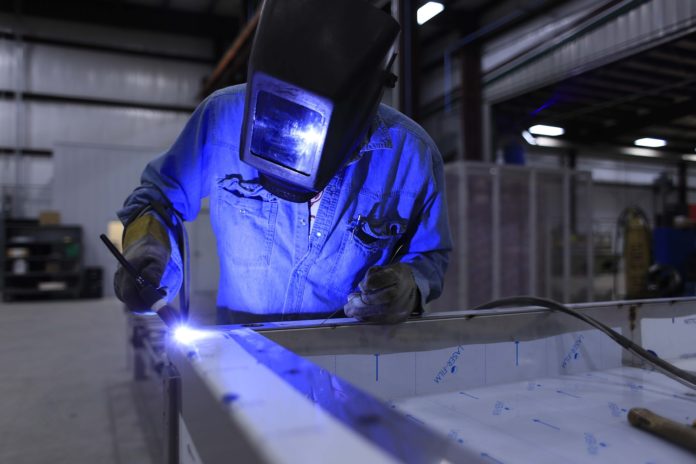
What is career and technical education (CTE)? According to the Perkins Act, a CTE program is defined as one that:
“Provides individuals with rigorous academic content and relevant technical knowledge and skills needed to prepare for further education and careers in current or emerging professions, which may include high-skill, high-wage, or in-demand industry sectors or occupations, which shall be, at the secondary level, aligned with the challenging State academic standards adopted by a State under section 1111(b)(1) of the Elementary and Secondary Education Act of 1965.”
For many, CTE and attending a vocational, trade, or technical school are the start to their careers. Trade schools have been trailing behind universities and two year colleges for decades. In 2018 in the Pew Research Center’s Teens and Parents Survey, 59% of students recorded they would be attending a four-year college in the fall, followed by 12% for two-year attendance, and 4% for a technical or vocational school. Although the enrollment numbers are still significantly lower than four year universities, trade schools may start to see an increase in students soon.
The national demand for skilled trade workers has increased in the past few years without the parallel increase in supply of workers. This so-called “skills gap” is the result of the lack of trained and certified tradesmen. Because of the skills gap leaving vacancies in the workforce, state governments and the federal government have been focused on promoting trade and vocational school enrollment.
In Wisconsin, the state government has been pushing for initiatives to encourage enrollment in and improve the quality of trade and vocational schools. Former Governor Scott Walker kicked off the Wisconsin Career Creator in 2018 to improve the technical education opportunities for the future workforce of Wisconsin. The initiative aimed to highlight opportunities that promote careers in trades through apprenticeships, dual enrollment classes in high school, business partnerships, reentry training programs, and better benefit opportunities for veterans wanting to enroll in trade school. This issue goes beyond partisan politics and remains important even after the transition of power to the new governor. Governor Tony Evers followed in his predecessor’s footsteps and celebrated Career and Technical Education Month this February to emphasize how much the state is investing in the CTE options available for students. In his 2019-2021 budget proposal, Governor Evers also requested that every technical school in Wisconsin offer early college credit programs to high schools without any fee attached. In the current legislative session, two bills were introduced. SB 44/AB 36 proposes that the Technical College System Board can award up to $1000 worth of grant money to students enrolled in apprenticeship program to help pay for necessary supplies. SB 142/AB 161 would protect student veterans enrolling in trade school from late fee penalties if using federal tuition benefits to pay for school. If they become law, these bills would move to make technical college a more affordable decision for students and would hopefully start reducing the number of students not pursuing higher education because of its price tag.
On the national stage, the current administration and Congress are also working to fill hundreds of thousands of technical jobs and to improve the quality of technical education. On July 31st, 2018, President Trump signed the Strengthening Career and Technical Education for the 21st Century Act (a reauthorization of the Perkins Act) into law in order to help train Americans properly for high skilled jobs. The legislation focused on local and community businesses working with CTE programs to better prepare students for the careers in these specialized fields. President Trump also created the National Council for the American Worker through Executive Order “to solve the new challenges faced by American workers,” including workplace education and training policies. Both the federal and state initiatives aim to give hardworking Americans the resources needed for them to make a prosperous career.
Apart from the investment the government and these businesses have in greater trade school enrollment, the students enrolling in these trade school programs are making an investment of their own. Trade school programs offer certificate/degree programs at a significantly lower cost than four years of college tuition. For the 2018-2019 academic year, in-state, public universities cost $9,716 to attend, while out of state public universities cost $21,629 and private universities cost $35,676. This does not even factor in the additional costs of college such as housing, materials, food, etc., which can cost on average $25,290 for in-state students and $40,940 for out of state students. The cost of technical and trade schools on average costs a fraction of that. The average trade school program costs about $33,000 total. When a bachelor’s degree costs about $127,000 on average and leaves many students with about $30,000 in student loan debt, a $33,000 program that might leave you in $10,000 of loan debt doesn’t seem like a bad option. When assessing the long run benefit of attending college, people often compare the salary earnings of a college graduate to that of a technical school graduate. The average salary of a college graduate with 0-5 years of experience came out to about $48,400 in the year 2018. A trade school graduate’s salary ranges from $30,175-$63,127 for females and $36,253-$79,978 for males. Similar to a bachelor’s degree, entry level pay starts at a low to moderate amount with room for raises and wage growth. When taking these figures into account, a student can attend trade school, receive a decent salary, and acquire less debt than someone who attended a four year university.
The economic growth the United States has experienced since the Great Recession has opened up millions of unfilled job opportunities. Companies need to fill mass quantities of middle-skilled jobs, and as this economic gap grows, trade schools will need to pick up the slack.
Interested in the latest in Wisconsin politics and government?Sign up today!





